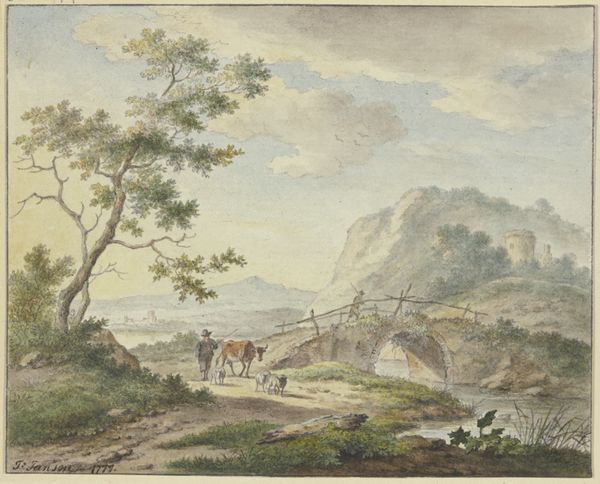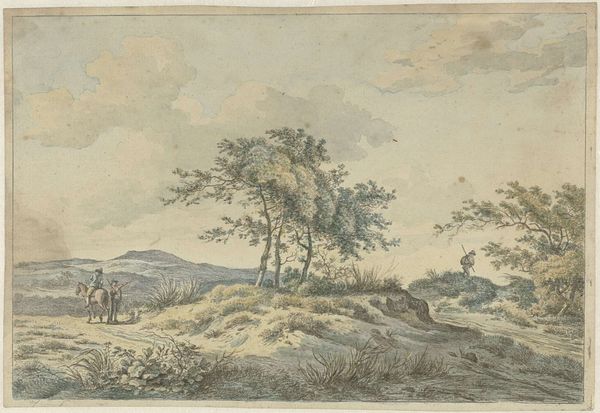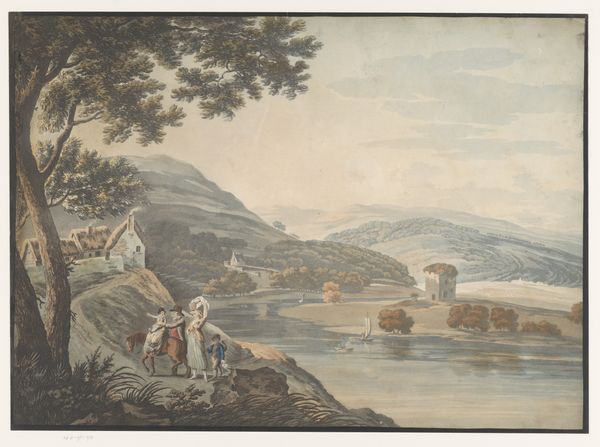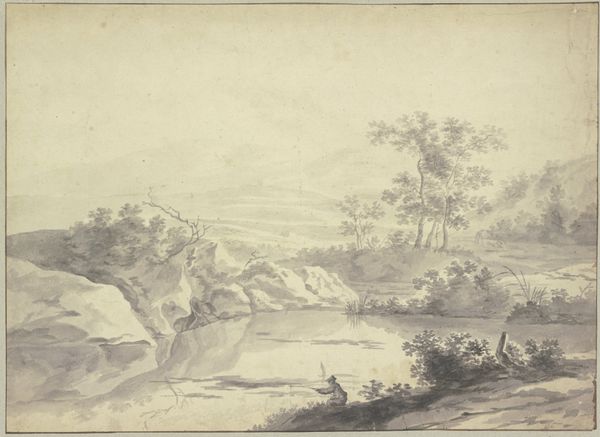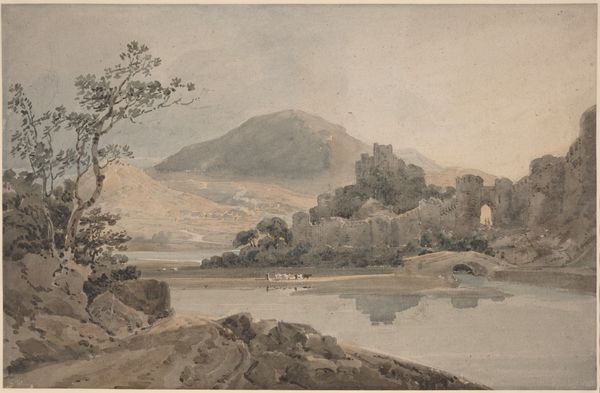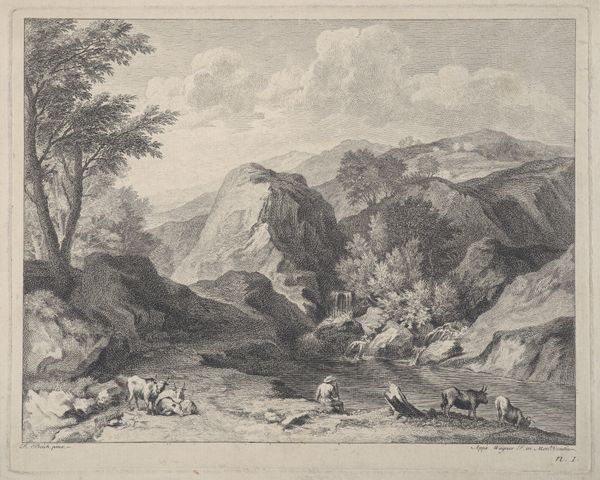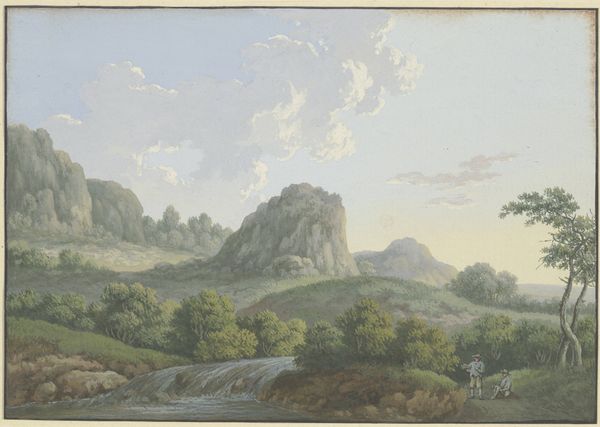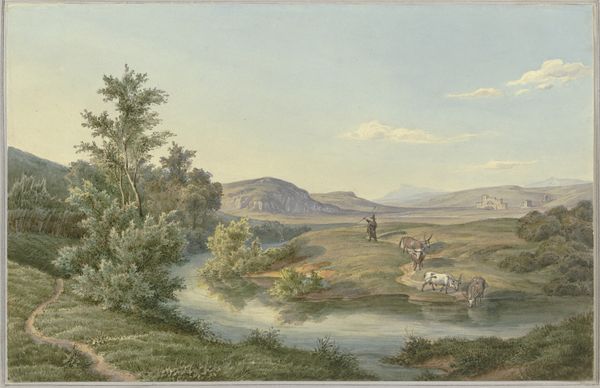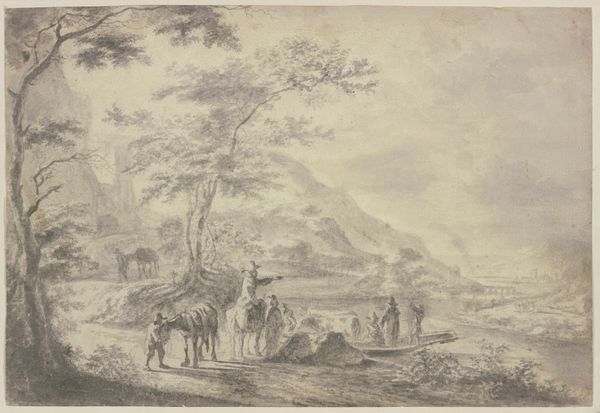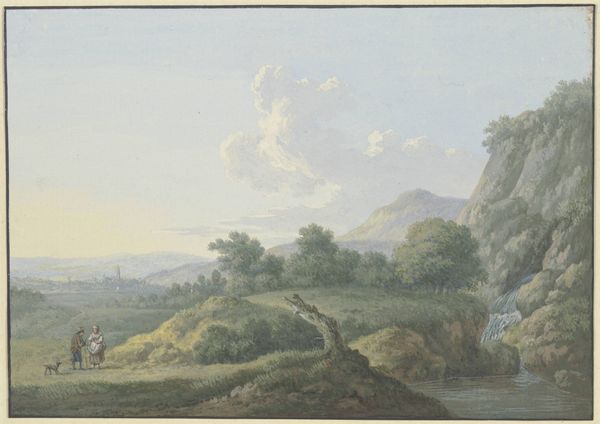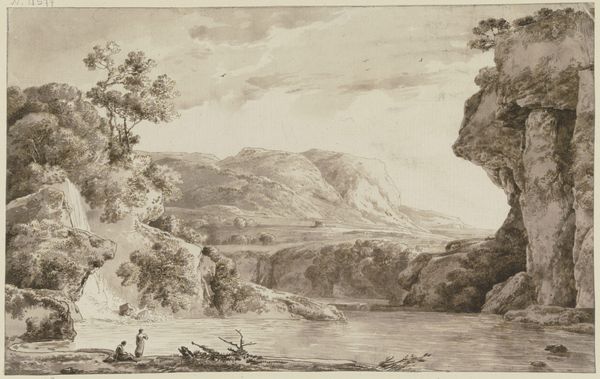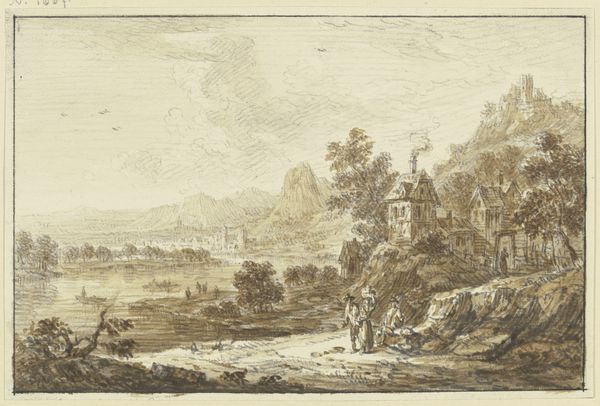
Bei einem Wasserfall ein Hirte mit einer Kuh und Ziegen
0:00
0:00
drawing, paper, watercolor, ink, indian-ink, chalk
#
drawing
#
landscape
#
figuration
#
paper
#
oil painting
#
watercolor
#
ink
#
coloured pencil
#
indian-ink
#
romanticism
#
chalk
Copyright: Public Domain
Johannes Christiaan Janson created this watercolor and pen artwork, "Bei einem Wasserfall ein Hirte mit einer Kuh und Ziegen", sometime around the turn of the 19th century. The artwork itself is not made from rare or luxurious materials, but from a humble combination of paper, water-based pigments, and ink. The appearance of this artwork is largely influenced by the properties inherent in these materials; its soft translucent colors, subtle details, and delicate lines. The techniques used for production, such as layering washes and pen strokes, imbue the work with a sense of depth and atmosphere. Such methods of production belong to the history of painting and drawing. Consider the amount of skilled work that went into this, not just in applying the pigments, but also in preparing them. It is not so far removed from other creative practices that are not considered fine art. By appreciating the material, process, and context of this work, we can expand our understanding of what art is, and who gets to make it.
Comments
No comments
Be the first to comment and join the conversation on the ultimate creative platform.
